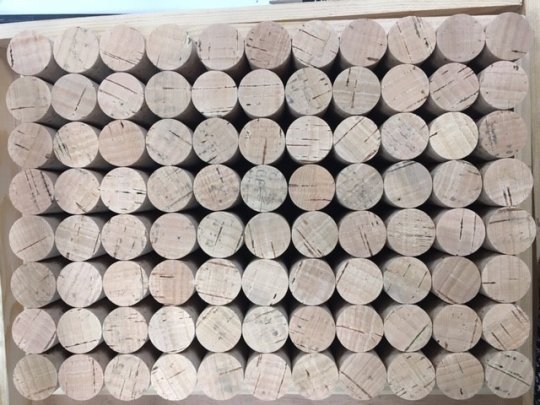-
Colmated cork stoppers: another version of the natural cork stopper. However, an additional operation is necessary due to the significant number of lenticels (pores) present on the cork. These are sealed with a mixture of glue and cork powder.
-
Stoppers made from cork fragments: these stoppers are made from cork fragments and cuttings. Their advantage is their homogeneity both within the cork itself and between different corks. They are good for relatively short-term bottling.
-
Agglomerated stoppers: these are made of cork granules glued together with food-grade glue.
-
Twin-top, 1+1 stopper, or technical cork consists of an agglomerated body with natural cork discs at each end.
Technological stopper: composed of micro-granules of cork stuck together with food-grade glue.
Cork stoppers benefit from a noble and traditional image although there is a risk of cork taste in the wine. Cork can contain 2,4,6 trichloroanisole (TCA), the molecule responsible for the corked taste that can appear in wines. Quality controls make it possible to reject the batches of contaminated corks and reduce the risk of contamination of the wine once it is in the bottle. Some cork manufacturers have developed methods to eliminate potentially contaminated corks and offer a guaranteed TCA-free range.
Cork stoppers have the lowest carbon footprint. On the other hand, they require more monitoring with regard to their storage conditions. Cork is a "living" material which is sensitive to humidity and temperature. They should therefore be stored in optimal conditions. The humidity of the cork should be kept between 4 and 8%. It is often recommended to use corks a few months following their manufacture. These stoppers allow air to pass through their porous structure and each stopper is characterized by an oxygen transfer rate (OTR) (See section Management of the bottling process).

